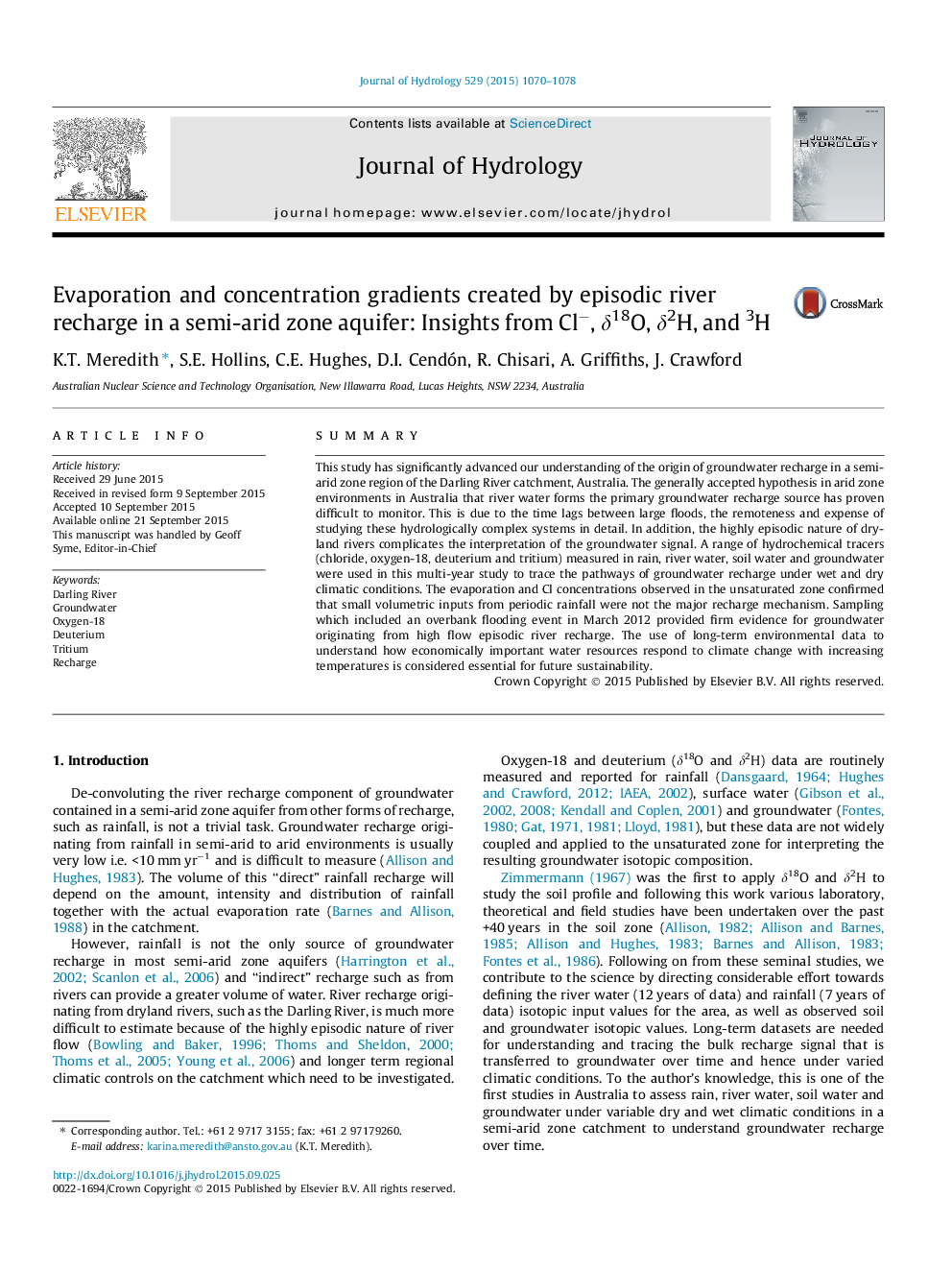| Article ID | Journal | Published Year | Pages | File Type |
|---|---|---|---|---|
| 6410735 | Journal of Hydrology | 2015 | 9 Pages |
â¢Cl, 18O and 2H of rain, river, soil and groundwater assessed in this long-term study.â¢Evaporation and concentration gradients formed via floods that form recharge.â¢Traced a flood event; 1.3-2.1 ka to attain salinity levels in groundwater.
SummaryThis study has significantly advanced our understanding of the origin of groundwater recharge in a semi-arid zone region of the Darling River catchment, Australia. The generally accepted hypothesis in arid zone environments in Australia that river water forms the primary groundwater recharge source has proven difficult to monitor. This is due to the time lags between large floods, the remoteness and expense of studying these hydrologically complex systems in detail. In addition, the highly episodic nature of dryland rivers complicates the interpretation of the groundwater signal. A range of hydrochemical tracers (chloride, oxygen-18, deuterium and tritium) measured in rain, river water, soil water and groundwater were used in this multi-year study to trace the pathways of groundwater recharge under wet and dry climatic conditions. The evaporation and Cl concentrations observed in the unsaturated zone confirmed that small volumetric inputs from periodic rainfall were not the major recharge mechanism. Sampling which included an overbank flooding event in March 2012 provided firm evidence for groundwater originating from high flow episodic river recharge. The use of long-term environmental data to understand how economically important water resources respond to climate change with increasing temperatures is considered essential for future sustainability.
